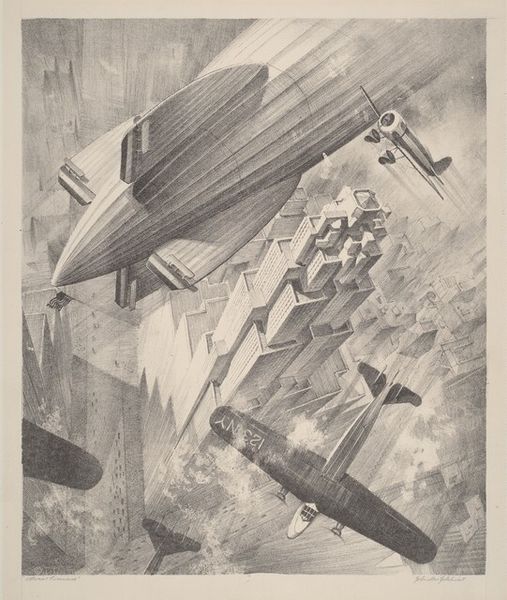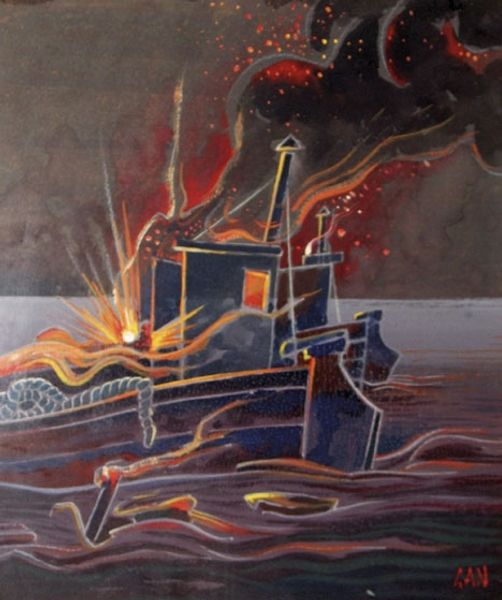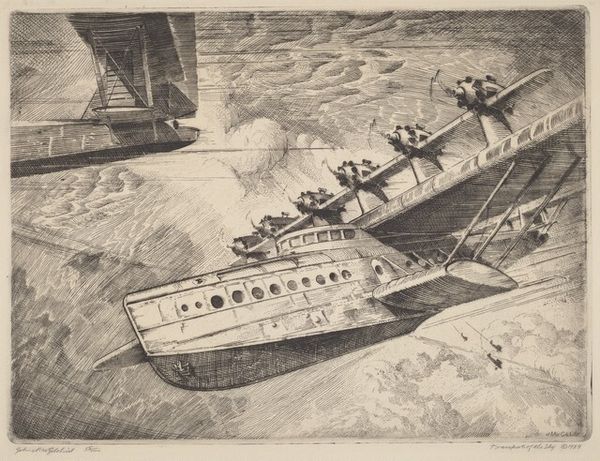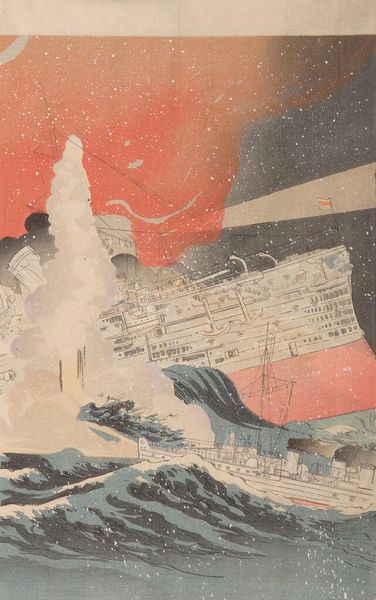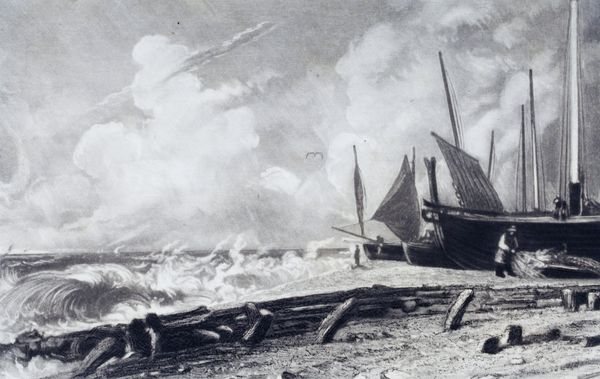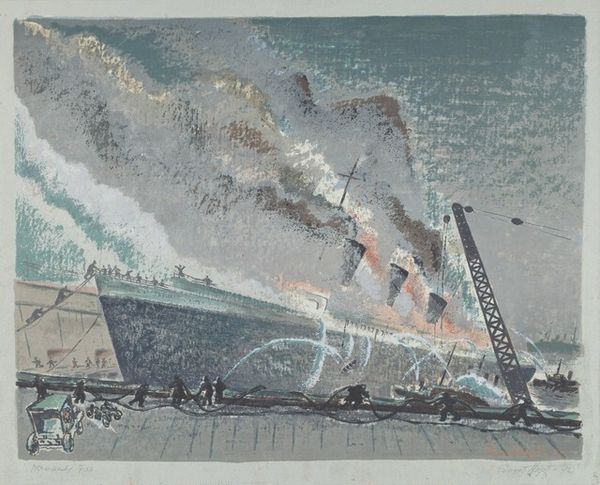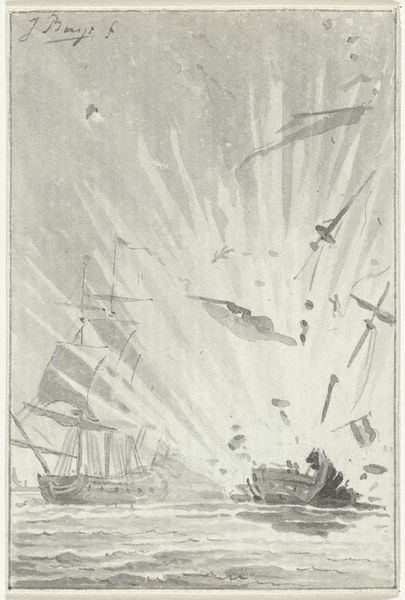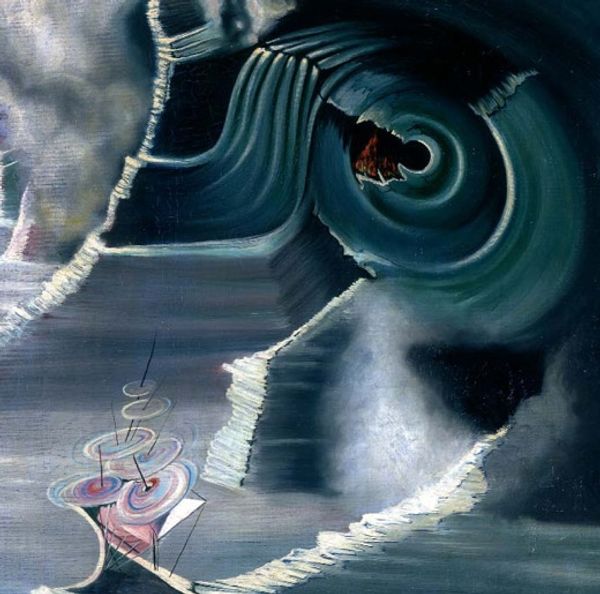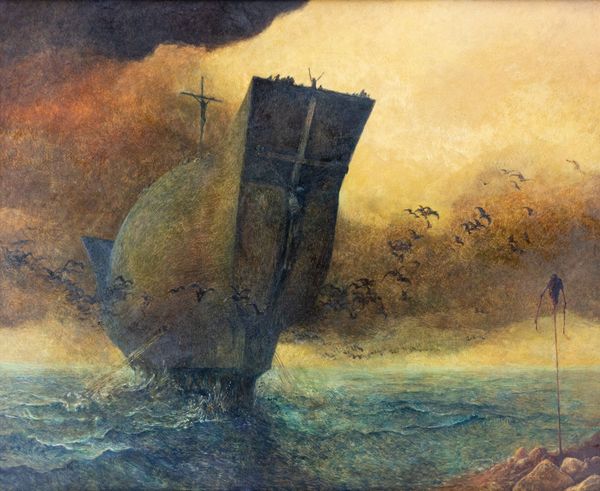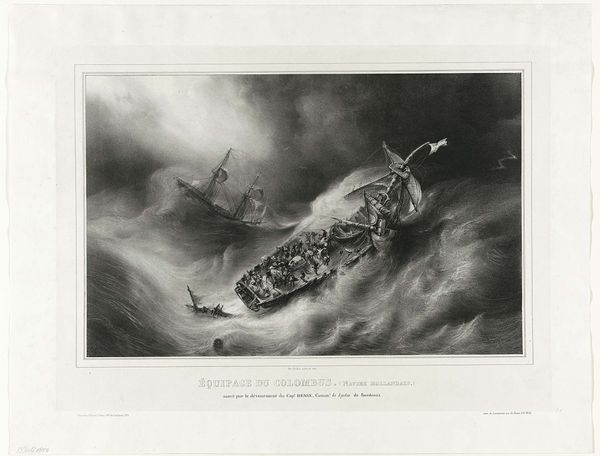
#
narrative-art
# print
#
landscape
#
figuration
#
history-painting
#
modernism
#
expressionist
#
realism
Copyright: Public domain
Curator: Let's consider Achille Beltrame's 1913 print, "Crash of the L 1." A rather dramatic scene. What are your initial thoughts? Editor: My immediate reaction is a visceral one. It’s ominous. The immense scale of the airship relative to the tiny figures clinging to it and the vastness of the ocean makes me uneasy. Curator: The image depicts the actual crash of the German zeppelin L 1 in the North Sea. It provides a window into early 20th-century anxieties around technological advancement and its potential for catastrophic failure. Note how it draws from tropes of the historical maritime disaster, much like the later fascination with the Titanic. Editor: I see the print primarily as an object representing the physical realities of early aviation and its risky construction. Look at the materials Beltrame used; he has very effectively used colour to bring to life a disaster involving canvas, metal, and human bodies meeting the sea. The materiality speaks to a society caught between industrial dreams and material limitations. Curator: Exactly! And this was happening in a period characterized by burgeoning nationalistic tensions, just before the first World War. Zeppelin crashes, like this one, revealed a certain vulnerability behind the display of military power. Consider the symbolic weight placed on these new technologies—masculinity, strength, imperial reach—suddenly laid bare in scenes of wreckage. Editor: These zeppelins, constructed using very specific manufacturing techniques and a complex labour division, embodied the material culture of the time. The failed attempt at technological advancement reflected on the limitations inherent in early aviation, impacting both public confidence and the allocation of resources. Curator: Furthermore, in terms of visual rhetoric, this crash encapsulates so many levels of societal anxieties; it shows the crisis of the modern subject facing technological advance. How much do these advances dominate and overpower humankind and our narratives of self? Editor: The image pushes the limits of the printed form itself. Here is a detailed illustration documenting this catastrophic collision. You get a keen sense of weight and force, it does more than show us this one disaster: it reflects more generally on progress and what gets left behind, lost and wrecked. Curator: I appreciate your highlighting that Beltrame has managed to make tangible something intangible and complex, and it continues to invite multilayered interpretations over a century later. Editor: Indeed. Examining it now, we are prompted to consider what happens when new technology clashes with raw materials, especially with today’s growing concerns of progress at all costs.
Comments
No comments
Be the first to comment and join the conversation on the ultimate creative platform.
